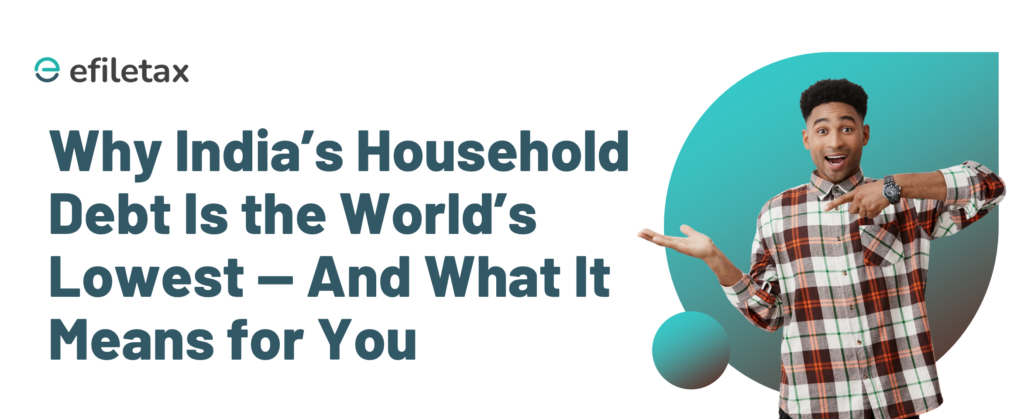
Introduction
India leads globally in household financial discipline. With household debt in India at just 39% of GDP, we outperform major economies like the US, China, and Japan. This reflects not just cultural values, but strategic economic management, setting Indian households apart in global financial stability.
What Is Household Debt?
Household debt includes loans taken by individuals for:
- Housing (home loans)
- Education (student loans)
- Consumer spending (personal loans, credit cards)
- Business (self-employment or small business loans)
It is measured as a percentage of a country’s GDP.
India’s Household Debt vs Global Peers
| Country | Household Debt (% of GDP) |
|---|---|
| India | 39% |
| USA | 75% |
| China | 61% |
| Japan | 62% |
| UK | 83% |
(Source: IMF Global Debt Database, 2024)
India’s significantly lower ratio showcases a cautious borrowing culture combined with stringent lending norms by regulators.
Why Is India’s Household Debt Low?
Several factors contribute:
- Cultural Values: Preference for savings over credit.
- Regulatory Vigilance: RBI’s strict norms on personal loans and credit assessments.
- Conservative Borrowing: High down payments, reluctance towards unsecured debt.
- Economic Structure: A larger share of informal employment reduces institutional borrowing.
Government Initiatives That Support Financial Stability
India’s policymakers have introduced several measures to control household indebtedness:
- RBI’s Tight Credit Norms: Limits on loan-to-value (LTV) ratios for home loans.
- Financial Literacy Campaigns: Initiatives by SEBI, RBI, and Ministry of Finance.
- Affordable Housing Push: Pradhan Mantri Awas Yojana promoting responsible home ownership.
- Microfinance Regulation: Clear norms to prevent over-indebtedness in rural areas.